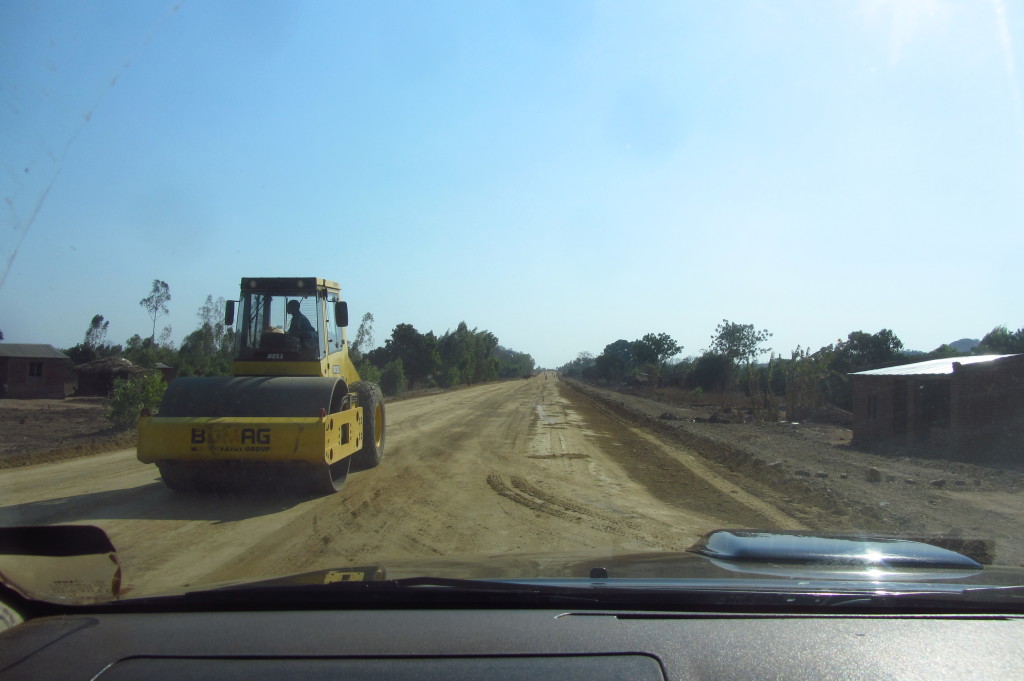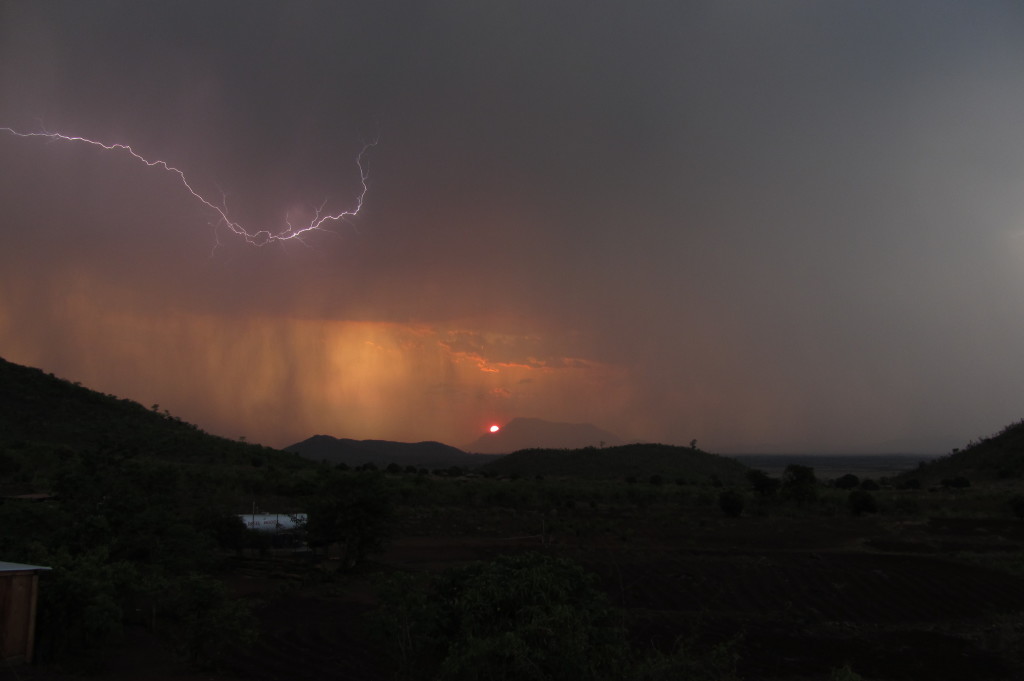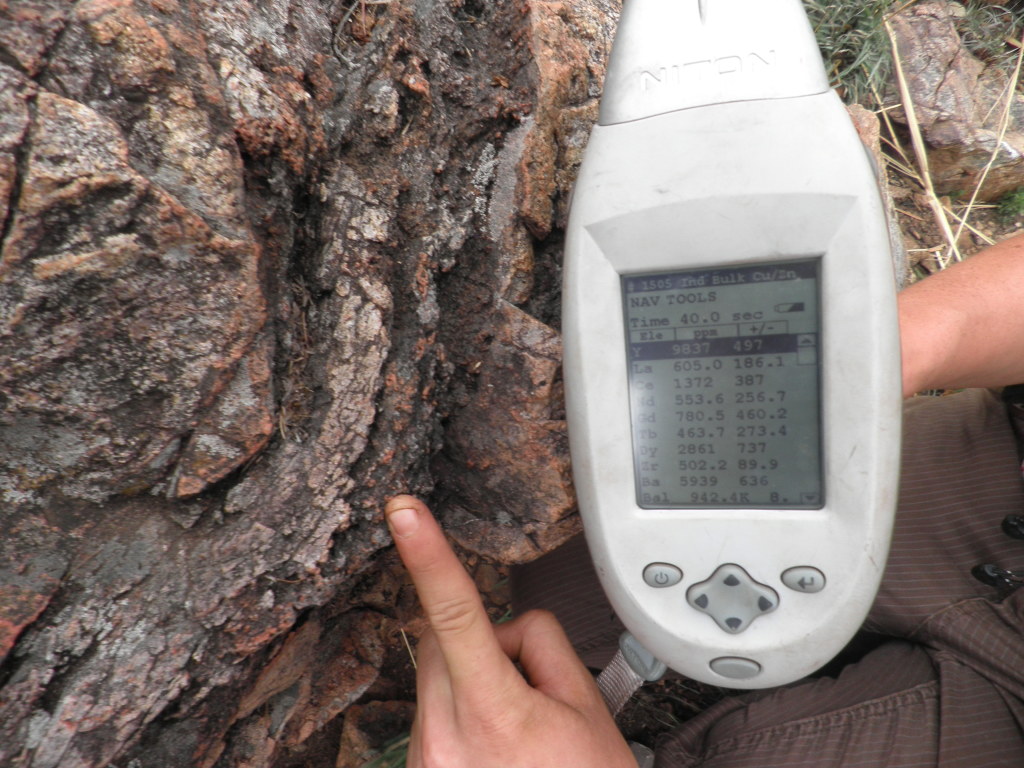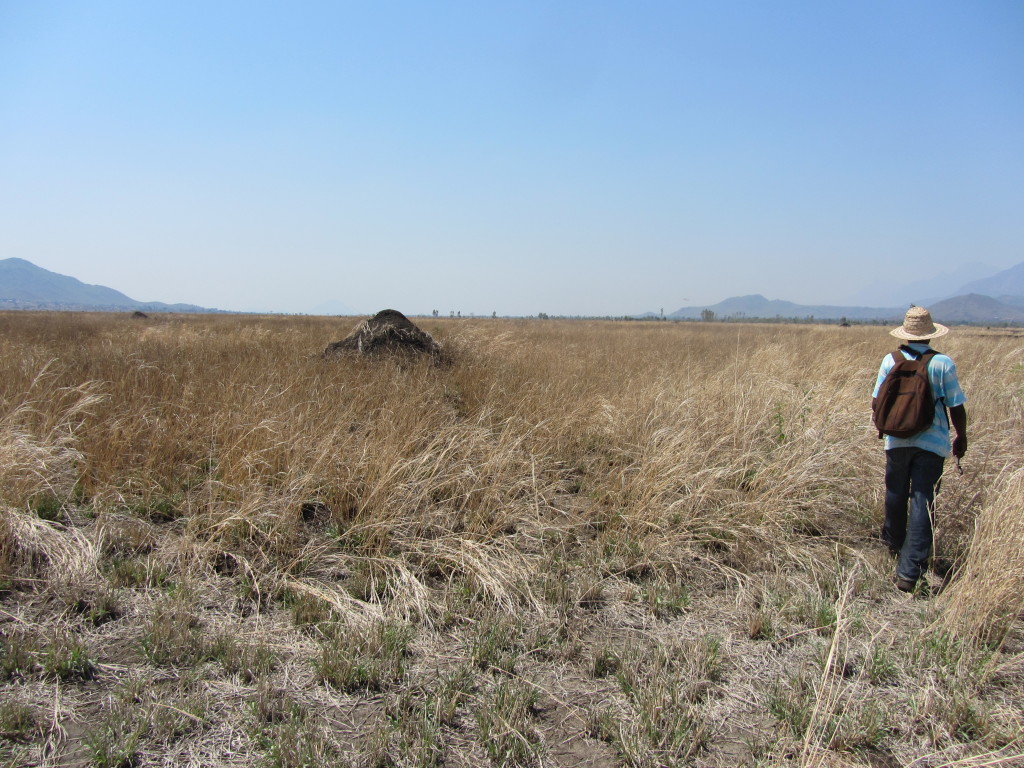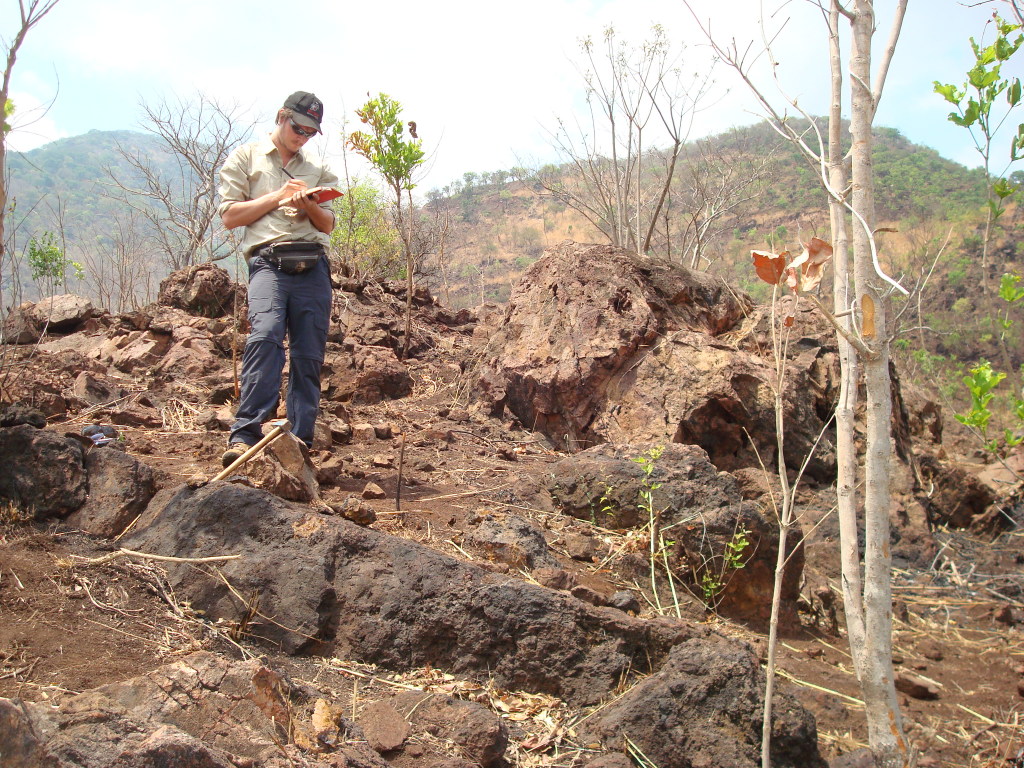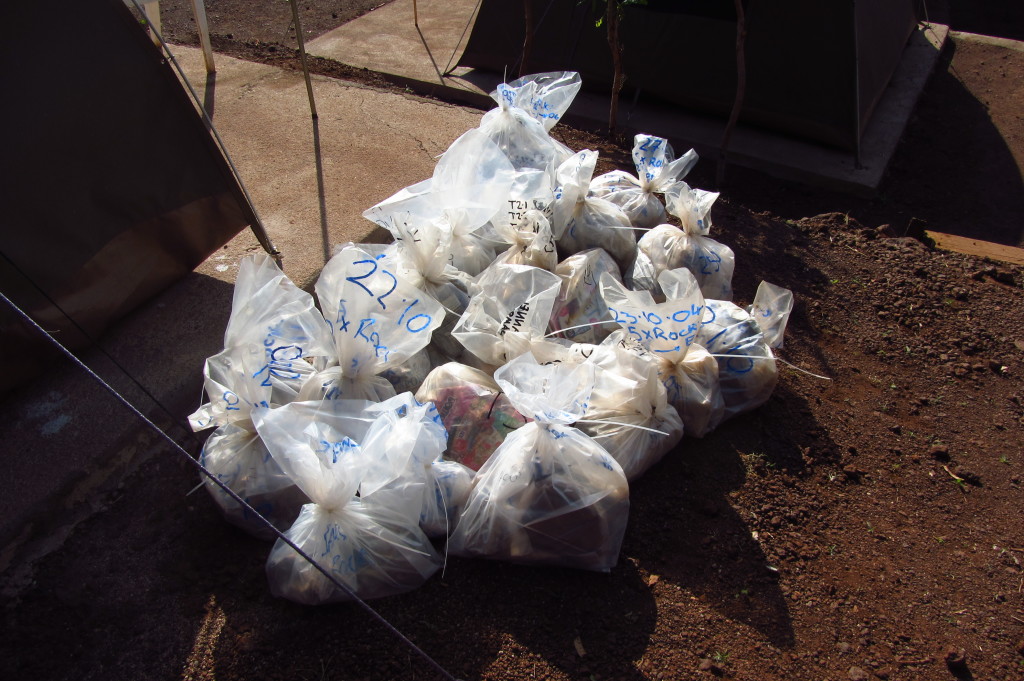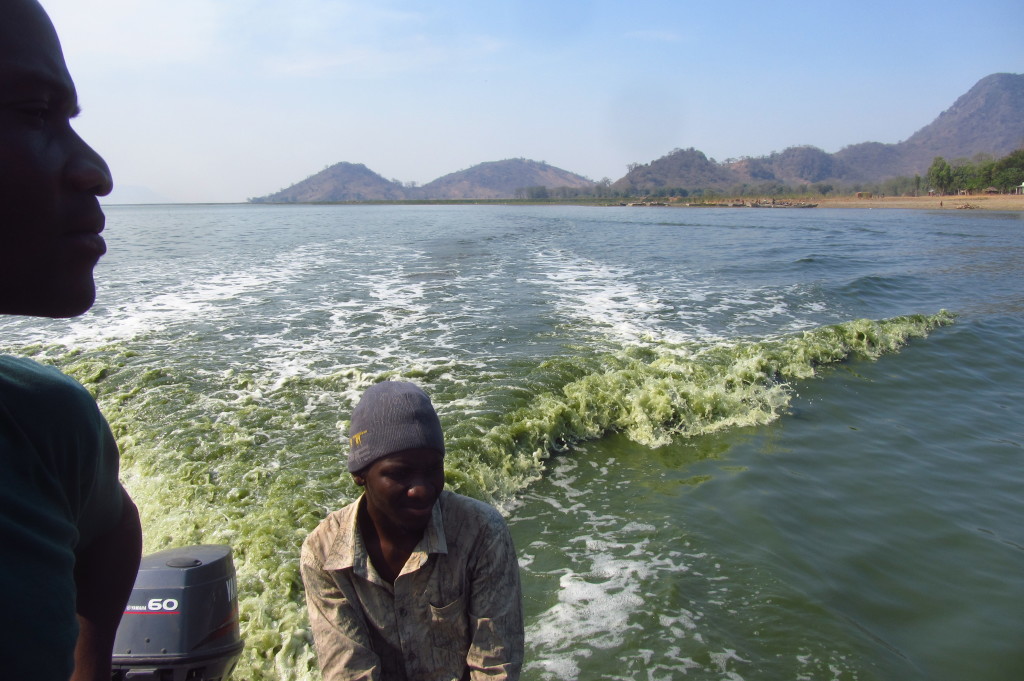Sam is a PhD student at the Camborne School of Mines, University of Exeter. You can find his research profile here and follow him on twitter @s_broom_fendley.
Day one of the PhD, and somehow I found myself on a flight to Blantyre International to embark on a month of fieldwork looking for minerals I had never heard of (synchysite, parisite, basnasite), in a rock type I had never seen before. I would have to learn quickly.
It was 2011, and the World had recently gone potty for the rare earth elements (REEs – click this link for a snazzy BBC video with sound effects). China dominated 97 % of the global supply, and the US, EU and other governments declared the REE a ‘Critical metal’ – metals crucial to the economy, but with a risk of supply volatility[1]. The price of the REE soared. From end 2010 to end 2011 the neodymium price increased from US$25/tonne to over $300/t[2]! Experts took delight in the fact that the term REE is something of a misnomer, there are REE everywhere! It seemed to be a golden age for exploration – the West wanted lots of REE, and there were plenty of deposits where it could be found.
My trip to Malawi was not a solitary affair. I was to work in collaboration with an exploration company, Mkango Resources, who were quick off the mark in the hunt for new REE supplies. Mkango held the license to explore large areas of the Chilwa Alkaline Province, a province roughly 300 km in diameter comprised of Jurassic-Cretaceous alkaline intrusions and carbonatites. Their main project was (and is) the Songwe Hill carbonatite, located on the Malawi—Mozambique border in a relatively remote and arid part of South-West Malawi.
While geologists generally consider the REE as a single group, our colleagues in industry only want specific elements. Elements such as Dysprosium, Europium, and Neodymium. Most of the rest are not useful. To make matters more difficult, most of the elements in demand are mid or heavy (H)REE. And as any undergraduate geochemist knows, these are not as common either in the Solar System or in the continental crust (*** garnets!) as the light rare earths (L)REE. Differences between the available supply and industry demand mean that the price of the HREE, relative to the LREE, can be over 2 orders of magnitude greater (Eu peaked at over 5000 USD/Kg in 2011).
The Songwe-Hill carbonatite is LREE-enriched, common to most other carbonatites, coming as they do from a low-degree partial melt of a fertile subcontinetal lithosphere. My task, as a PhD student, was to look for the improbable – areas in the carbonatite where HREE enrichment could be found. Not necessarily a long shot – there are some hints in the literature of HREE-enrichment taking place in carbonatites[3], but examples are few, and often leave more questions than answers. In short, I was to find a HREE deposit in a rock commonly held as an example of the most extremely LREE-enriched rock types known.
Arriving in Blantyre, however, my mind was preoccupied with learning the names of the myriad of people I was meeting and the practicalities of transport. Songwe is only about 100 km from Blantyre as the crow flies, but transport isn’t exactly easy. We travelled first to Zomba, it was 50 km out of the way but home to the geological survey and the Malawi offices of Mkango. A quick briefing, before a final beer beckoned. The next day I was heading out for a month based in a dry camp.
Paved roads gave way to dirt roads, to worse dirt roads. Mkango have put a lot of work into getting to Songwe, including building bridges and re-grading roads, but the going was still bumpy. Huge amounts of (desperately needed) investment are going into the infrastructure of Malawi, and now the route should be reduced from a 3 hour drive, to a more comfortable 1.5 hour journey.
Part of the reason I flew out to my field site so early in my PhD was because this was the time which (1) had been scheduled to carry out drilling and (2) was not during the monsoon. Unfortunately, while the Canadian drillers may have run on regular time, all of the various shipping companies needed to move the drilling gear from Canada to Malawi ran on African time. Consequently, the gear arrived 3 months behind schedule, just in time for 6 months of rain. The upshot of this was that I, and the other excellent geologists on camp, had a month to entertain ourselves in a geologist’s playground. Anything in the exploration licence was our oyster, and we had the kit to make the most of it.
By far the most useful piece of kit in the REE-exploration-geologist’s inventory is the portable XRF. Ours was (and still is) heavily used. While neither the most precise or accurate piece of kit, it can identify Y and Ce, and give a rough idea of the ratios between the two. We started to target brecciated carbonatite, using a geological map made (excellently) in the 1960’s and some ASTER data. Some of these targets were very successful, with really high concentrations of the HREE. Others were… less successful.
The most successful targets had high modal % xenotime (HREE-phosphate) concentrations. Bingo. I had my first area to work on! Outcrop was poor – but it was time to get mapping.
When not mapping or carrying out field exploration, time was spent playing with assay data in the camp. Playing around with assay data in 40˚C heat can lead to some delusional statements, but the correlation observed between P and Y in all of the samples from Songwe Hill, was pretty convincing. Apatite was a likely host for the HREE at Songwe. Finding it proved to not be too much of a problem, but figuring out why is still and on-going process. It would require a lot of samples…
A year later, having successfully made my way through a fraction of the previously collected samples, it was time to return to Malawi to expand the scope of the study. This time, the trip was a more formal and organised affair. I was accompanied by Alan Woolley, Scott Swinden and Frances Wall, and we were embarking on something of a Malawian carbonatite tour. I had become a geological roadie.
Our visit to Songwe Hill was something of a PR event, and we were accompanied by a member of the press and a photographer. Rare earth extraction is big news in Malawi, a country where the economy is heavily dependent on foreign aid and agriculture. My status as a geological roadie meant that I did not take part in most of the conversations with the reporter, and spent most of the time explaining various outcrops to my supervisor. The article, published the next day on the front page of the Malawian newspaper ‘The Daily times’, was not the result I expected. A pleasing advantage was the corroboration my newfound status as a ‘mineral expert’ (I’m in the photo so it must be true). However, I learnt valuable lessons about how easily misunderstanding of science, off-the-cuff remarks and out-of-context quotations can lead to very different stories. “Governance and Corruption”, although important, were discussed in the field far less than the different deposit models but I guess they don’t make attention-grabbing headlines.
Visits to other carbonatites in the Chilwa Alkaline Province were less of a camera heavy affair – at least, the cameras were predominantly pointed at the rocks. Of particular note was our visit to Chilwa Island, the first carbonatite identified in Africa, and a textbook carbonatite intrusion. It has both the advantage and disadvantage of being located in the middle of a Bilharzia ridden lake. The advantage of this is that it is relatively pristine, and protected from development in a country with population density similar to that of Switzerland. The disadvantage is that it is in the middle of a Bilharzia ridden lake.
Passage required borrowed boats from the Malawian Department of Fisheries and Agriculture Ministry and Malawian Police. Representatives from both agencies decided to come along for the day, to have a look around. As such, we made quite a large party! I’ll finish the post off with with a photo of all of us under the shade of a tree at the end of the day, and some parting thoughts. Songwe Hill looks well on track to becoming a mine, which, in my opinion, will benefit the economy of Malawi greatly. Through some of the work from my PhD, and a considerably additional amount of work by others, it looks like apatite will be extracted as a HREE-rich co-product[4] and work is ongoing towards making this a more efficient process. Our understanding of why apatite is HREE-enriched makes up the bulk of my (in prep) thesis, and the results are in prep for publication. Watch this space.
Hopefully I’ll be back again in the future.
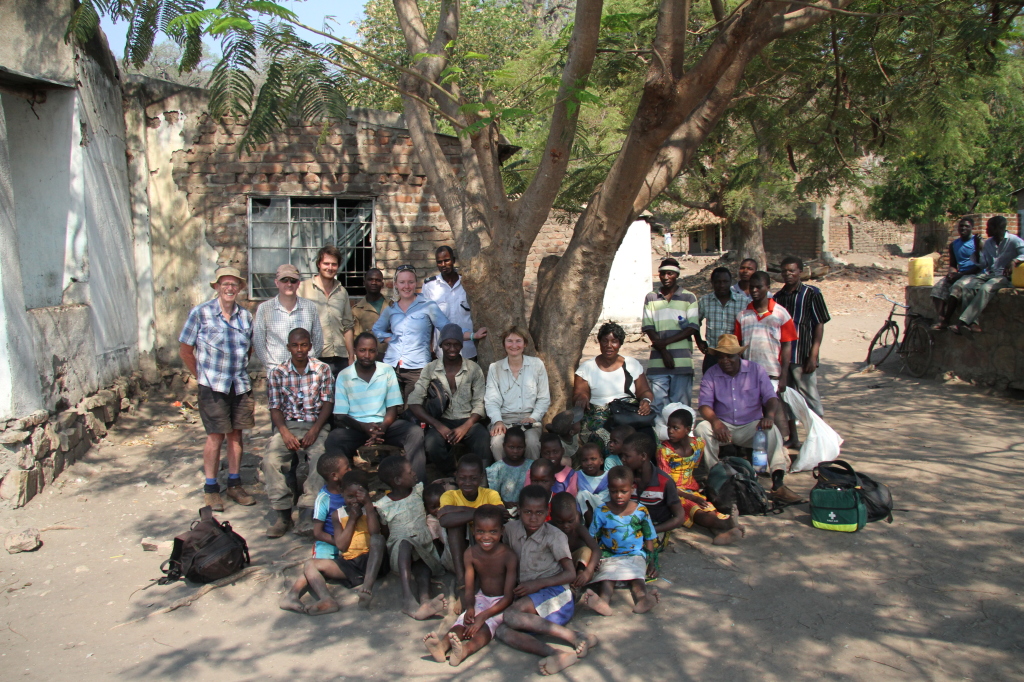
From the left, along the back: Alan (NHM), Will (Mkango), Myself, Representative from the Ministry of Agriculture, Aoife (Mkango), Malawian Police representative, local gentlemen. Centre row: Ansel, James and Chikondi (Mkango), Frances (CSM), Effie and Burton (Mkango). Bottom: local children.
[1] See Gunn, 2014, for more information on other interesting critical metals
[2] Wall, 2014
[3] E.g. Lofdal, Namibia, (Wall, 2008), Khibiny, Russia (Zaitsev et al, 1998), Huanglongpu (“one-long-poo”), China (Kynicky et al 2012).
[4] See Brady et al, 2014
![]() This work is licensed under a Creative Commons Attribution-NonCommercial-ShareAlike 4.0 International License.
This work is licensed under a Creative Commons Attribution-NonCommercial-ShareAlike 4.0 International License.

